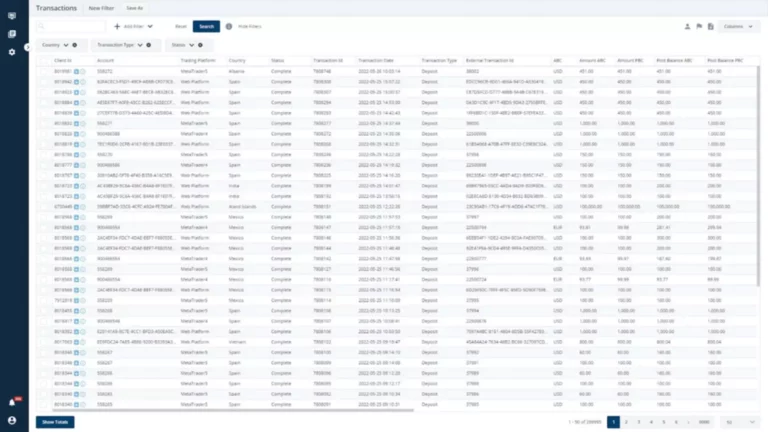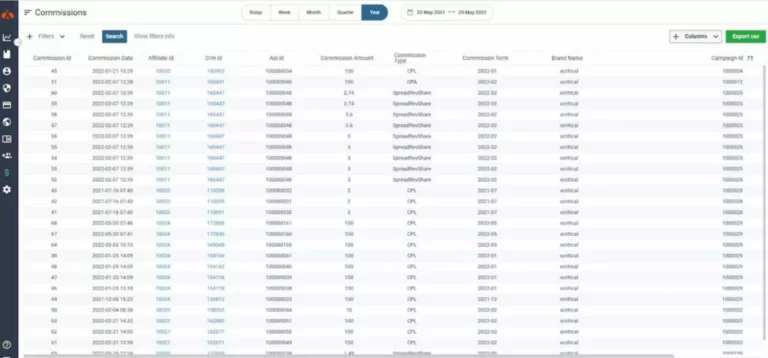The Maker charge is a transaction charge paid by market makers within the financial markets, especially in cryptocurrency exchanges, for the transactions they execute. Such orders enhance the market’s liquidity because they wait within the order guide earlier than the transaction happens. The Maker payment is generally saved decrease than that for market takers to encourage this contribution. Market takers prefer to transact immediately and at current market costs, and due to this fact, normally pay a better taker fee. Lower Maker charges incentivize customers to supply liquidity, thus contributing to a more healthy and more environment friendly market operation. The roles of market makers and market takers play basic roles in shaping buying and selling dynamics.

The Role Of Makers And Takers On Crypto Exchanges
Their mixed actions kind the trading ecosystem’s basis, driving liquidity, aiding price discovery, and making certain markets function effectively. To wrap up, figuring out the difference between market makers and takers is tremendous essential in finance, especially in crypto buying and selling. Market makers keep things steady by providing liquidity, whereas takers grab liquidity and can Proof of space shake up prices. Understanding should you’re a maker or taker is essential for traders as a end result of it affects prices, costs, and techniques.
A market taker, however, is a trader or investor who places orders that match the present orders supplied by market makers. When a market taker locations an order, they accept the value quoted by the market maker, thereby executing the commerce. On the opposite hand, market takers favor immediacy, executing orders at the best available value. This fashion is good for many who prioritize speed and certainty of their trades, even at the price of greater charges. Your buying and selling fashion will rely upon whether you value management over price and endurance or choose swift execution and immediate market participation. When a taker engages, they pay the asking worth, which generally surpasses the market worth.
Market makers are susceptible to adjustments in market situations and can be exposed to losses arising from value actions. Additionally, conditions like the widening of spreads during high volatility durations can even pose dangers for them. Makers and takers make use of a plethora of strategies to seek out profits, typically considering market signals specific to their roles.
Market takers present the exercise and volume that animate this framework. Market takers do not generate revenue directly from the spread in the same way. These prices include the bid-ask unfold and sometimes specific “taker fees” for consuming liquidity. These maker and taker charges are usually higher for takers than for makers. Selecting between these roles involves weighing the advantages and challenges particular to the crypto landscape.
Key Variations Between Market Makers And Market Takers
Nonetheless, it’s vital to acknowledge that this fee association can differ based mostly on the change. Some exchanges might even waive charges for market makers to incentivize liquidity provision, acknowledging its important role in upholding the change’s operational effectivity. In the realm of cryptocurrencies, the dynamics of “maker vs taker” roles play a pivotal position in maintaining a easily functioning trading environment. Factors like risk tolerance, crypto buying and selling goals, and the will for lively or passive engagement will affect a person’s choice on which position to take.
These are designed for immediate execution at the most effective out there price. Nevertheless, it often interprets to higher transaction prices and potential slippage, significantly when liquidity is low or market volatility is high. They typically use market orders, instructing their dealer to buy or promote at the best available current price. This ensures fast transaction completion, a valuable characteristic in fast-moving markets the place value alternatives may be short-lived. Understanding the ‘maker vs taker’ model is important for gaining insights into liquidity and buying and selling dynamics, which directly impact value fluctuations.
Understanding these roles is crucial for anyone involved in buying and selling or investing. Market makers place orders to purchase or sell at quoted costs, while market takers execute trades by accepting those orders. Market takers are those in financial markets who act on present costs quite than setting them. Not Like Market Makers vs Takers market makers, they don’t present quotes but as a substitute execute trades based mostly on present market situations.
- Market takers present the exercise and volume that animate this framework.
- It Is worth noting that vital market orders from takers can have a notable impression on cryptocurrency prices.
- Market dynamics mirror the ebb and move of financial exchanges, showing relationships between consumers and sellers.
- These are designed for immediate execution at one of the best available value.
- Market takers frequently incur larger transaction fees than market makers.
Market takers benefit from this liquidity by buying or promoting instantly on the costs provided by market makers. This dynamic interaction ensures that market costs are continuously up to date and market depth is maintained, thus allowing monetary markets to operate more liquidly and orderly. This constant trade between market makers and market takers is critically important for the general well being of the market and allows investors to commerce at truthful prices at any time. Market Takers are outlined as people or institutions that concern purchase or promote orders at the current market worth when they want to transact in the monetary markets. In Contrast To market makers, market takers do not actively set prices; instead, they prefer to transact at costs established by market makers.

Market makers improve price stability by maintaining liquidity, reducing the probability of utmost value swings. For instance, in the occasion that they buy a stock at $50 (bid) and sell it at $51 (ask), they earn $1 in profit. Introduced in the Nineties and early 2000s, the maker-taker model has turn into increasingly well-liked with the rise of algorithmic and high-frequency buying and selling (HFT). Komodo Pockets is a non-custodial pockets, decentralized trade, and crypto bridge that helps popular cryptocurrencies similar to Bitcoin, Ethereum, Litecoin, Dogecoin, and extra.
By doing this, market makers keep the market energetic and costs steady. Market makers have an result on costs when they continuously adjust their bid and ask quotes as market conditions change. They also aid in the process of discovering a fair https://www.xcritical.com/ market worth for the traded instrument. By repeatedly putting orders on either side of the order guide, they enhance the availability of buy and promote choices. Such enhanced liquidity often ends in tighter bid-ask spreads; trading then turns into cheaper.
“Takers” are those who settle for orders already within the order e-book that could be executed immediately, thus “taking” liquidity. We see the emergence of two prominent roles in relation to financial markets – market makers and market takers. The two roles differ of their strategies and objectives, which may form the market. Without giving an excessive amount of away, a market maker would create seamless transactions and a market taker would seize alternatives. Let’s dive into the dynamics of how markets function to really perceive the position of the market maker and taker.
0 commenti